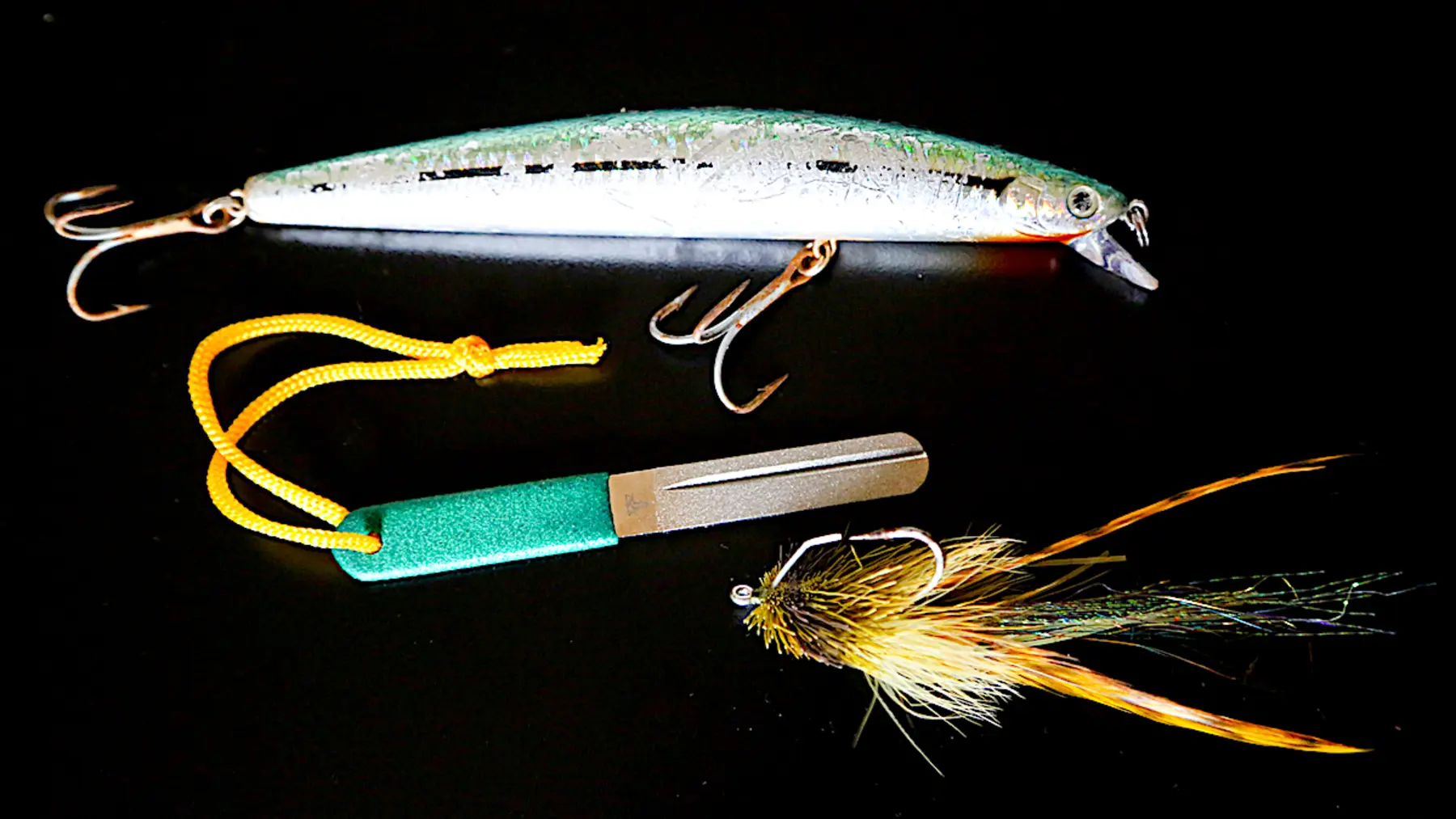Many anglers you might spend a significant amount of time selecting the perfect lure or fly, focusing on profile, color, weight, and action. New options like realistic swimbaits and intricate flies are constantly introduced. However, the importance of a sharp hook, the most essential fishing tool, can sometimes be overlooked.
Sharp Hooks for Better Penetration
While hooks come pre-sharpened, their effectiveness diminishes over time, especially in saltwater environments where they constantly bump against rocks, pilings, and sand. Regularly checking and sharpening hooks increases your chances of landing a fish.
Taking the Time to Sharpen Hooks
Expert anglers recommend sharpening hooks throughout the day, even if it means pausing the action momentarily. This simple task can significantly improve your success rate.
How Often to Sharpen Hooks
Saltwater fishing requires frequent sharpening due to constant exposure to corrosive elements. But even in freshwater, hooks can become dull after snagging rocks or debris. Regularly inspect your hooks and sharpen them as needed.
Replacing Hooks
Severely rusted or bent hooks should be replaced entirely. Sharpening won’t restore their original effectiveness, and using them could compromise your catch.

Hook Sharpening Tools
Many hook sharpening tools are available, including diamond files, whetstones, and multi-groove sharpeners. The Dr. Slick hook file is a popular choice due to its portability and versatility, featuring both fine and medium grit surfaces.
Sharpening Technique
The key to sharpening hooks is creating a razor-sharp edge, similar to sharpening a knife. The goal is to remove tiny bits of metal to create a needle-like point.
- Draw the hook point towards the file, not away from it. Filing away from the point can create unwanted burrs.
- Different hook designs require specific sharpening approaches. Mimic the original angle of the hook point when sharpening.
- Most experts recommend sharpening to a triangular tip by drawing the hook across the file at a 45-degree angle.
- Sharpen the inner bend of the hook to ensure a clean, pointed tip.
- Avoid excessive sharpening, which can weaken the hook point.
- Test the hook sharpness by gently dragging it across your thumbnail. If it catches, it needs more sharpening. If it leaves a groove, it’s ready to fish.
Sharpening for All Fishing Conditions
Hook sharpening is essential for both saltwater and freshwater fishing. Whether you’re battling tough saltwater fish or nymphing for trout in freshwater, sharp hooks increase your chances of a successful catch. A dull hook can easily snag or fail to penetrate properly during a crucial strike.
By taking the time to properly sharpen your hooks, you’ll be better prepared to catch the fish of your dreams. Invest in a good hook sharpening tool, learn the proper technique, and make sharpening a regular part of your fishing routine. You won’t regret it.
Image/Source: MeatEater





